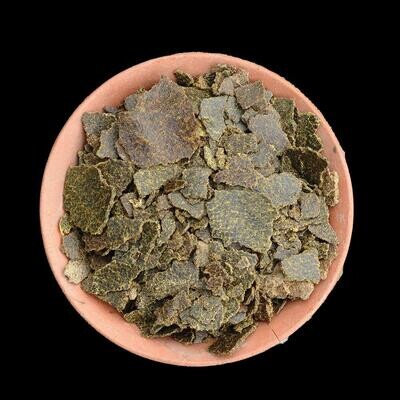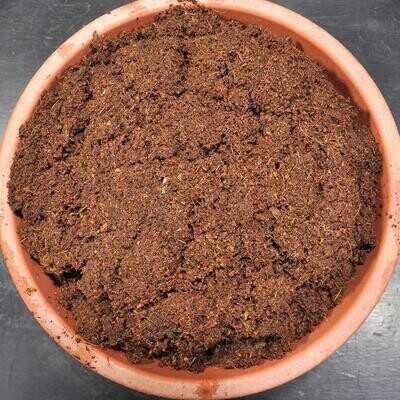Please check the Shipping Updates Page for information on shipping.
Eulychnia castanea cv. varispiralis spiral form
Eulychnia castanea cv. varispiralis
Common Names:
- Variegated Spiral Cactus
- Spiral Eulychnia
Scientific Classification:
- Kingdom: Plantae
- Clade: Angiosperms
- Order: Caryophyllales
- Family: Cactaceae
- Genus: Eulychnia
- Species: E. castanea
- Cultivar: ‘Varispiralis’
Description:
Eulychnia castanea cv. varispiralis is a striking and highly ornamental cactus cultivar, renowned for its unique spiral growth pattern. It is a variant of Eulychnia castanea, characterized by its columnar, ribbed stems that twist in a pronounced spiral fashion. The stems are green to gray-green, with prominent ribs and areoles bearing short, brown to gray spines. This cultivar is particularly prized for its variegated form, which displays irregular patterns of yellow or cream coloration on the stems, adding to its visual appeal. Mature plants can reach heights of 6–10 feet (1.8–3 meters) in cultivation, though growth is slow. It produces nocturnal, white to pale pink flowers, followed by small, edible fruits.
Origin of the Name:
The genus name Eulychnia is derived from the Greek words eu (meaning “good” or “true”) and lychnos (meaning “lamp” or “light”), possibly referring to the plant’s columnar, candle-like appearance. The species name castanea means “chestnut-colored,” likely describing the color of its spines or fruits. The cultivar name ‘Varispiralis’ highlights its variegated and spiral growth characteristics.
Origin of the Plant:
Eulychnia castanea is native to the arid regions of northern Chile, particularly the Atacama Desert, where it grows in rocky, well-draining soils. The ‘Varispiralis’ cultivar is a horticultural selection, developed for its unique spiral growth and variegation. It is not found in the wild and is primarily cultivated in nurseries and private collections.
Conservation Status:
Eulychnia castanea is not listed on the IUCN Red List. However, like many cacti, it may face threats from habitat loss and overcollection. The ‘Varispiralis’ cultivar, being a cultivated form, does not impact wild populations and is propagated sustainably for horticultural purposes.
Ecological Role:
In its native habitat, Eulychnia castanea provides shelter and food for desert fauna. Its flowers attract nocturnal pollinators such as moths and bats, while its fruits are consumed by birds and small mammals, aiding in seed dispersal.
Cultivation and Care:
- Light: Requires full sun for optimal growth and to maintain variegation.
- Water: Water sparingly, allowing the soil to dry completely between waterings. Overwatering can lead to root rot.
- Soil: Use a well-draining cactus or succulent mix, amended with coarse sand or perlite.
- Temperature: Thrives in warm climates (50–90°F or 10–32°C). Protect from frost and freezing temperatures.
- Propagation: Propagated through seeds or stem cuttings. Seeds may not retain the variegated or spiral traits, so cuttings are preferred.
Why It’s Special:
Eulychnia castanea cv. varispiralis is highly prized for its unique spiral growth pattern and variegated stems. Its slow growth and sculptural form make it a standout addition to any cactus collection or xeriscape garden.
Perfect For:
- Cactus enthusiasts and collectors
- Rock and desert gardens
- Ornamental displays in containers or landscapes





